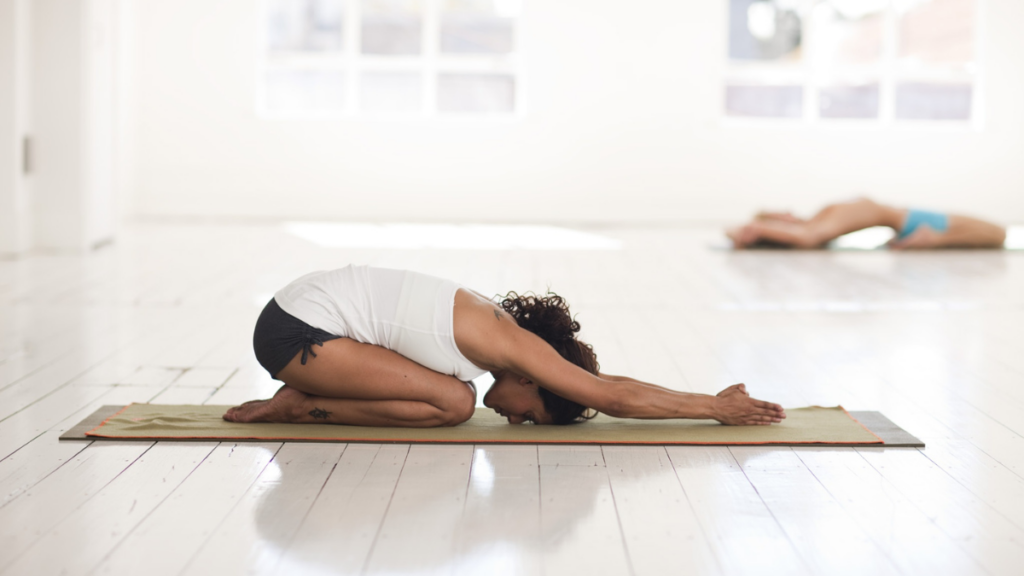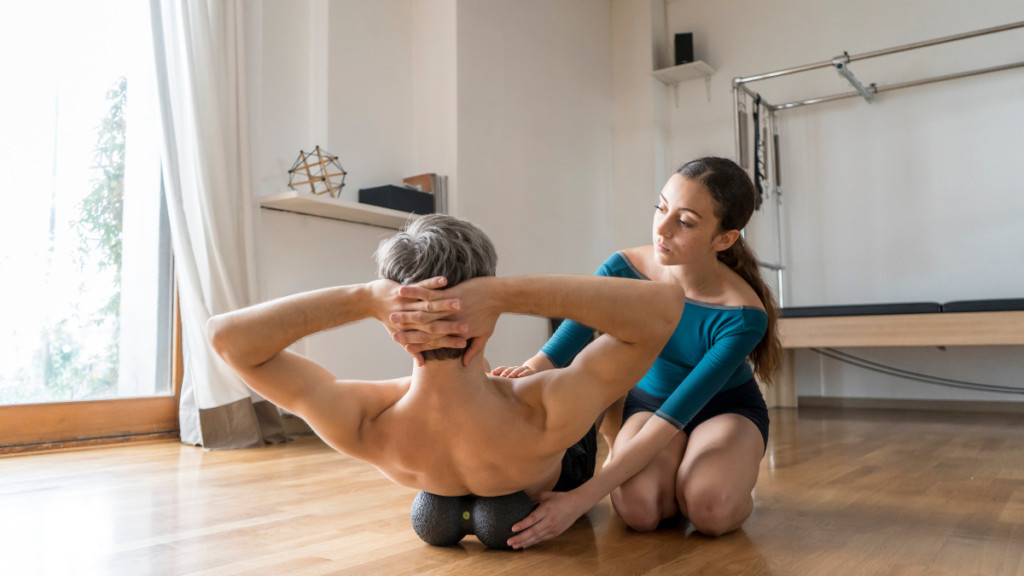You’re someone who’s always prioritized fitness. Whether it’s yoga, strength training, or Pilates, staying active has been your anchor.
But recently, you’ve noticed discomfort in your abdomen—a nagging sensation that led to a diagnosis of a hernia. Now, you’re wondering can I do Pilates if I have a hernia without risking further damage.
The short answer? Yes, but with modifications and expert guidance. Pilates can be adapted to suit your needs, helping you stay active while managing your condition.
Let’s dive into how you can continue moving safely and effectively.
What Is Hernia? Understanding Your Condition

A hernia occurs when tissue, such as part of your intestine, pushes through a weak spot in your abdominal wall.
Common types include inguinal (groin), femoral (upper thigh), umbilical (belly button), and hiatal (upper stomach) hernias.
Symptoms vary—some people experience mild discomfort, while others face sharp pain, especially during physical activity.
Hernias often develop due to factors like heavy lifting, chronic coughing, pregnancy, or even genetic predisposition. While some hernias are minor and manageable, others may require surgery.
The key takeaway? Understanding the type and severity of your hernia is crucial before engaging in any exercise, including Pilates.
Can I Do Pilates If I Have A Hernia? The Answer
Let’s address the elephant in the room: Is Pilates safe for hernia patients? Yes, but only under specific conditions. Here’s what you need to know:
- Consult Your Doctor First: Always get clearance from your healthcare provider before starting any new exercise regimen.
- Work With a Qualified Instructor: Find a Pilates instructor who is experienced in working with clients who have injuries or medical conditions.
- Modify Exercises: Avoid high-pressure movements that strain your core. Instead, focus on low-impact exercises that build stability.
If you’ve had hernia surgery, wait until your surgeon clears you for exercise. Once cleared, ease back into your routine gradually. Start with gentle stretches and progress as your body allows.
“Your body knows its limits—listen closely.”
Why Pilates Can Be Beneficial For Hernias

Pilates isn’t just about sculpting abs—it’s about building core strength, improving posture, and fostering body awareness.
These benefits make it an excellent choice for individuals recovering from injuries or managing conditions like hernias.
The controlled movements in Pilates reduce strain on vulnerable areas while strengthening the deeper muscles that support your core. This focus on mindful movement helps prevent unnecessary pressure on the herniated area.
Additionally, proper breathing techniques in Pilates can lower intra-abdominal pressure, which is critical for hernia management.
“Movement heals—but only when done right.”
Safe Pilates Exercises For Hernia Patients

When adapting Pilates for hernias, the goal is to strengthen your core without exacerbating the condition. Here are some safe exercises to consider:
- Pelvic Tilts: Strengthens deep core muscles gently. Improves spinal alignment and reduces lower back tension.
- Heel Slides: Engages the transverse abdominis, the deepest layer of your core. Keeps pressure off the herniated area while improving muscle control.
- Standing Leg Work: Builds core stability and balance without straining the abdomen. Activates glutes and stabilizers safely.
- Side-Lying Exercises: Works obliques and stabilizes muscles without direct strain on the abdominal wall. Ideal for those recovering from surgery.
- Breathing Techniques: Focus on exhaling during exertion to prevent excessive pressure buildup. Helps maintain safe and controlled core engagement.
These exercises provide a foundation for rebuilding strength without compromising safety.
Exercises To Avoid At All Costs
Not all Pilates moves are created equal when it comes to hernias. Certain exercises can increase intra-abdominal pressure, worsening your condition. Steer clear of the following:
- Crunches and Sit-Ups: These place too much strain on the abdominal wall.
- Planks and Leg Lifts: They elevate intra-abdominal pressure significantly.
- Deep Twists: Excessive twisting can stress weakened core muscles.
- Valsalva Maneuver: Holding your breath during exercise raises internal pressure.
Instead, opt for modified versions of these exercises that prioritize safety over intensity.
Research Supports Smart Movement Over Rest
Studies confirm that low-impact exercises like Pilates can aid recovery after hernia repair. A study found that controlled core-strengthening exercises improved outcomes for post-surgical patients.
Another study highlighted how mindful breathing techniques in Pilates reduce intra-abdominal pressure—a vital factor for hernia management.
“Science backs smart movement over rest alone.” This reinforces the idea that staying active—when done correctly—is better than complete inactivity.
Tips For Practicing Pilates Safely
Here are actionable tips to ensure your Pilates practice remains safe and effective:
- Get Medical Clearance: Always consult your doctor before beginning any exercise program.
- Choose the Right Instructor: Look for someone trained in injury rehabilitation or working with special populations.
- Start Slow: Gradually increase intensity as your body adapts.
- Focus on Form: Proper technique prevents strain and ensures maximum benefit.
- Listen to Your Body: Pain is never okay. Stop immediately if something feels wrong.
“Small steps lead to big wins.” Patience is key to long-term success.
When To Avoid Pilates Entirely
While Pilates offers numerous benefits, there are times when it’s best avoided. If you experience severe pain, swelling, or discomfort during a session, stop right away.
Similarly, if you haven’t fully healed from surgery, pushing too hard can delay recovery.
Avoid advanced poses unless explicitly approved by your healthcare provider. Movements like deep twists or heavy lifting place significant stress on the abdominal wall.
Remember, rest is just as important as activity.
“Sometimes slowing down speeds healing up.” Listen to your body—it knows best.
Real-Life Inspiration: From Struggle To Strength
I once worked with a client named Maria, who was diagnosed with an umbilical hernia. She loved her weekly Pilates sessions but feared she’d have to give them up.
Together, we tailored her routine to focus on low-impact movements and proper breathing techniques.
Over time, she regained her confidence and strength, proving that a hernia doesn’t have to define your fitness journey.
Maria’s story reminds us that progress is possible—even with limitations.
Conclusion – Can I Do Pilates If I Have A Hernia
So, can I do Pilates if I have a hernia? Absolutely—but with care and guidance. By understanding your body’s needs and respecting its limits, you can safely enjoy the many benefits of Pilates.
Whether you’re recovering from surgery or managing symptoms, staying active empowers you to take charge of your health.
Remember, every step counts. Keep moving forward, one breath at a time.












